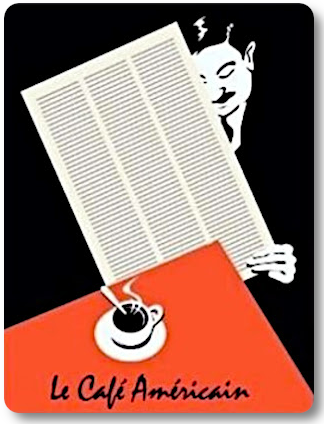"Ninety-five percent of Japan's debt is domestically owned. Fickle foreigners have almost no sway. Indeed, Japan's problem is still an excess of savings ." (at abormally low rates of return that serve to subsidize government mismanagement and malinvestment.)
An interesting piece from the Japan Times below, raising the issue of a hyperinflationary collapse of their economy and the yen. As you know, I forecast in 2005 that a new school of economic thought is likely to rise out of the financial crisis which the world is in today. The crisis is certainly not over, despite the government propaganda and economic window dressing that is being applied. Quite likely we have only seen the end of the first Act in what is going to be a three part drama lasting about nine more years.
In particular, the understanding of money and monetary theory is still in its infancy, having been sidetracked by the ideologues in the service of corporatism and big government. In fairness, economics is difficult because there are an enormous amount of variables, and the time lags are highly significant and varied. The fact that economics is a social science with a profound impact on public policy decisions does not help advance academic research. It does seem that the field has a surfeit of economists for hire who often seem to produce studies in order to support pre-ordained conclusions and biases. The average person can only mouth the opinions given to them by television and these studies as 'proofs' of the opinions they hold so dear. Their judgement is easily led in this, since it has no depth.
Economics is a subject rarely taught in the general curriculum. A person reads a few articles by supposedly learned men, and thinks themselves in a position to pronounce broad judgements for or against anything. Those who would appear informed enjoy repeating slogans and cartoons of thought to support their biases, which they themselves do not really understand, but draw emotional comfort from them. The irony is that they are so often arguing nonsense, and against their own best interests. Such is the power of propaganda to hold up caricatures and denounce them, and energize the public to enslave themselves.
Most discussions which I read get the Japanese economic experience all wrong. There is a complete misunderstanding of the roots of their deflation, the bubble as it was occurring, their long deflation and national stagnation, the single party political system and oligarchic economic structure, and the tremendous psychological impact which defeat had on the Japanese national psyche at the end of World War II.
As I have pointed out before, deflation and inflation are part of a policy decision in a purely fiat regime. The bias is to expansion as it is in all Ponzi schemes. People constantly create artificial rules regarding the inability to expand the money supply at will. Their minds cannot accept that something which they value so highly is created out of thin air by the monied interests.
The assumptions one makes when engaging in economic analysis are all important. Data is often sketchy and selective. People take naive examples and extrapolate them into real-life scenarios, crushing their complexity. This is due to the weakness of their model.
I think the field will progress more quickly once some new insights are made, and a new model, or skeleton if you will, is struck that allows the mathematicians to begin to flesh it out again.
For now, at least in my opinion, most economic thought is impoverished since the revolutionary insights of Keynes and so many others in response to the world depression of the 1930's. The jargon that currently passes for knowledge is a sign of decadence. I find all of the schools to offer little more than caricatures of what is a highly complex and richly interactive system.
My personal opinion is that Japan will not collapse until its export mercantilism collapses, or the average age of the overly homogeneous population strangles its ability to maintain a high savings rate and a ready market for government debt at artificially low prices.
I expect the UK and a portion of the european region to founder first, and then perhaps China, which appears to be an enormous bubble, an accident waiting to happen. Its collapse may be a precipitant to collapses in the developed world. The US dollar will have its day to devalue into a reissuance, but perhaps not until Europe and the UK are sorted out first. But the dollar is a doomed currency, the vanity of vanities. All fiat currencies are doomed; they are invariably the victims of human willfulness.
The adulation which the media and financiers had showered on Mussolini and Hitler and their economic recoveries in the 1930's was widespread, as it was for Japan Inc. in the 1980's, and for China today. The crowd always gets it wrong, but it is surprising how often the monied interests and the professionals get it wrong as well, and remain stubborn in their misjudgement until they are overwhelmed by its consequences. Or perhaps that is their intention. Who can say, who can truly 'think like a criminal.' You are a prisoner of reason, balance, and natural restraint. These are creatures of their own appetites, with a hole in their being which one can barely appreciate.
The Bankers will make the world an offer which they think it will not be able to refuse. One currency, and then one government. People being irrational are not likely to take that deal, once again.
There are those who say that they very sure what is coming, what will happen, what the future will bring. For the most part they are speaking out of fear and false pride. The only certainty is that if they really knew what is going to happen, they would cast themselves down from high places in despair.
Grab something solid and hang on to it, and to the faith that sustains you. Do not be distressed if it feels as though the world has lost its reason, and is made blind, and all is deception and trial, for this is part of the process which has begun. If a war comes, then the world will lose its ability to reason in its temporary madness. We are in for a rough ride, and revelations of what is life and what is nothingness, what is true and what is false.
“When pride comes, then comes disgrace. But with disgrace comes humility, and with humility comes wisdom. The humility of the righteous will guide them, but the sly illusions of the proud will destroy them." Prov 11
People will ask, and I can only say that I do not know if this is the end time, as no one can know this. What does it matter, since surely we are all heading towards the last things and a judgement, at our own pace. But it may certainly feel like it is something more general, more momentous, at some point before our blasphemous generation puts itself back into balance with God and nature again, and the crisis has past.
As the song says,
"You ain't seen nothing yet."
How to Live Before You Die by Steve Jobs
Japan Times
Government Debt Crisis: Bubble prophet fears new disaster
By REIJI YOSHIDA
March 19, 2010
Economist Noguchi warns soaring public debt may bankrupt Japan, bring back hyperinflation
Prominent economist Yukio Noguchi is one of the few who correctly predicted the collapse of Japan's bubble economy in 1987, warning the preceding euphoria was based on a major distortion in land prices.
Now the doomsday prophet is making another terrifying prediction: Japan is likely to be devastated by a snowballing public debt that will bankrupt its government and trigger catastrophic hyperinflation.
"There is little hope," Noguchi said in an interview with The Japan Times at Waseda University's Graduate School of Finance in Tokyo. "Japan's fiscal conditions are so bad, it can no longer be fixed without causing inflation. I'm very pessimistic."
Noguchi is not the only one deeply fretting the debt.
They may still be a minority, but an increasing number of economists and market players are voicing deep concerns about Japan's fiscal sustainability and fear catastrophe may strike in the near future.
Compared with Greece, Japan's gross government debt is far worse, at 181 percent of gross domestic product — the highest among the developed countries. Greece's debt-to-GDP ratio is 115 percent.
Japan's present debt-to-GDP ratio is only comparable with what it was at the end of World War II. At that time, the only way the government could reduce the debt was through hyperinflation, which wiped out much of the people's wealth with skyrocketing prices.
"I can't tell exactly what will happen (this time), but what actually happened after the war was that the price level surged 60 times in just over four years," Noguchi said.
"If the same thing happens again, a ¥10 million bank account will have the same net value of just ¥100,000 today. It's actually possible," he warned.
The alarmists even include Ikuo Hirata, chief editorial writer of the Nikkei business daily.
Hirata predicts the huge debt will eventually force the Bank of Japan to purchase Japanese government bonds on a massive scale, eroding market confidence and pushing up long-term interest rates.
A rise in long-term interest rates of even a few percentage points would sharply increase debt-servicing costs on the bonds and critically damage the government's already precarious finances.
"The curtain of the tragedy will be raised next year," Hirata warned in a Nikkei article on Dec. 21.
Pessimists like Noguchi and Hirata are still in the minority — at least for now. The yield on 10-year JGBs, their barometer, hasn't indicated any trouble yet.
"Talk of a massive JGB bubble — let alone default — is far-fetched," the Financial Times said in its Feb. 8 editorial titled "Japan's debt woes are overstated."
The editorial pointed out that, for a long time, JGB yields have been effectively fixed at the ultralow level of around 1.3 percent — compared with the 3.6 percent yield on 10-year U.S. Treasury bonds and the 4 percent for its counterpart in Britain as of Thursday.
"Ninety-five percent of Japan's debt is domestically owned. Fickle foreigners have almost no sway. Indeed, Japan's problem is still an excess of savings," the FT said.
"For some time yet, the government will not find it hard to secure buyers for JGBs. Japan's debt problem will be worked out in the family."
But most experts, including those at the International Monetary Fund, agreed that Japan's midterm future is shaky, and that the government could face difficulty financing its public debt in around 10 years.
In a July report, the IMF warned that Japan may find it "difficult" to finance its debt domestically toward 2020 because household savings are expected to keep falling in line with its rapidly graying population and declining birthrate.
Households maintained an average savings rate of more than 10 percent in the 1990s, much higher than in other developed countries. But as the aging workforce started tapping their assets to support retirement life, the savings rate — which supports Japan's fiscal deficit — fell to 2.2 percent in fiscal 2007, according to IMF figures.
Households directly and indirectly account for the financing of at least 50 percent of all outstanding JGBs, mainly through accounts and other assets at banks, Japan Post Bank and pension funds, the IMF said.
The IMF simulation indicates gross public debt could exceed household financial assets as early as 2019, which would likely force the government to seek more JGB buyers abroad, probably with a higher interest rate, since foreign investors in general demand a higher return on bonds than the ultralow 1.3 percent offered by Japan.
"The results indicate that domestic financing will likely become more difficult toward 2020, while other sources of fundings are available, including from overseas," the report said.
Masaya Sakuragawa, professor of finance at Keio University in Tokyo, recently conducted a simulation on the sustainability of the nation's public debt. His conclusion is that the only way to save Japan from bankruptcy is to drastically raise the politically unpopular consumption tax to at least 15 percent — a level he describes as "a rather optimistic scenario."
"If the debts keep increasing at the current pace, there is a possibility that (Japan) will face big trouble in around 10 years," Sakuragawa said.
The simulation examined two scenarios. The first hikes theconsumption tax to 10 percent by raising it a point a year from fiscal 2014 to 2018. The second hikes it to 15 percent, raising it over a longer period, from fiscal 2014 to 2023.
Under the 10 percent tax scenario, the debt expands forever, making sovereign bankruptcy inevitable. But the 15 percent scenario starts bringing the debt to heel in 2025.
Sakuragawa admitted the simulations weren't that realistic because they are based on some optimistic assumptions: that the social security budget won't drastically expand, interest rates will remain low, and the economy will keep growing at an annual pace of 1.5 percent.
The professor argued that a more drastic increase in tax revenues will be needed to save Japan from going insolvent, a crisis he says would wipe out much of the value of JGBs and trigger a domestic financial panic.
"The possibility is high that panic like a run on banks would break out. People would try to withdraw their money, but banks would go insolvent because they wouldn't have enough assets anymore," Sakuragawa said.
According to Sakuragawa, a dramatic rise in the consumption tax is the only viable option. Economists agree that, compared with other taxes, the sales tax would have the least impact on potential economic growth because the burden would be thinly spread to all taxpayers, he said.
Tax hikes, especially in the sales levy, are always a political taboo. When the former ruling Liberal Democratic Party introduced and then later hiked the consumption tax, it took a drubbing at election time. Even the LDP's Junichiro Koizumi — the most popular prime minister in recent memory — pledged not to touch the sales tax for fear of triggering a voter backlash.
"Koizumi should have raised the consumption tax. He had such high popularity, but he still did not want to raise the tax," said a former senior government official who was one of his closest aides.
"Japan's finances are in a stalemate. There will be no way out," he said.
Prime Minister Yukio Hatoyama, head of the ruling Democratic Partyof Japan, has pledged not to raise the consumption tax for at least four years, although key politicians in both the ruling and opposition camps have started discussing the urgency of fiscal reconstruction.
Deputy Prime Minister and Finance Minister Naoto Kan surprised the public last month by floating the idea of starting discussions as early as this month on a sales tax hike.
Kan has pledged to adopt a midterm fiscal policy framework by June and reach a conclusion on "fundamental tax reforms" by the end of March 2012. Market players are keen to see what strategy the government maps out for fiscal reconstruction.
Kan, however, told the Upper House Budget Committee on March 4 that he will stick with an expansionary budget to prop up the economy for at least "one or a few more years." He also said it is still too early in the global slump to start talking of an "exit strategy" to mop up liquidity.
"If we shift to an exit strategy too early, the results will be much worse," Kan told NHK on March 8, signaling that an immediate switch to fiscal austerity could throw cold water on the economy and reducetax revenues even further.
Keio University's Sakuragawa and many other fiscal experts remain skeptical about the government's financial future. He said the public and politicians will avoid taking bold action on government finances until a shock hits the JGB market and starts pushing up long-term interest rates.
"So the scenario that I hope will happen is that Japan will face a minor crisis first, and the people will finally realize that a government bankruptcy will have a catastrophic impact on them," he said.
"Basically, Japanese people are good (at grasping situations). So they will eventually be willing to accept a rise in the tax," Sakuragawa said.
























.jpg)
.jpg)




























